
Also known as Sonar Quilla or Sone ka Quilla (golden fort) Jaisalmer fort stands high showcasing its beauty and elegance as it is one of the world’s largest forts located in Jaisalmer, Rajasthan. Sonar Quila is the second oldest fort in Rajasthan.
Its extensive yellow sandstone walls are bright yellow during the day and fade to honey-gold as the sun sets and due to this, it is also called the Golden fort. This dessert beauty has seen many battles while standing amidst the sandy stretches of the great Thar Desert on Trikuta hill. Jaisalmer itself is known as the golden city and offers the cultural fusion of nomadic desert and royalty which will let you experience something different.
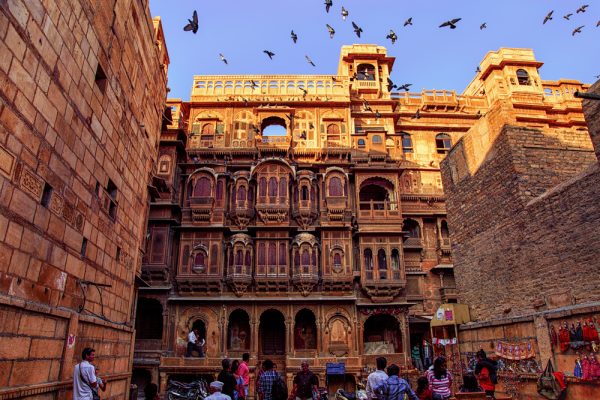
In the city of Jaisalmer, Rajasthan a classical architectural marvel stands, known as the Patwon ki Haveli. Situated near the Patwa valley, this haveli comprises of 5 different palaces, and is also known as the house of the brocade merchants, because it was built by a wealthy brocade merchant and jeweler. The 5 mansions are meant for 5 Patwa brothers. At present, there is one haveli where guests are put up, while two others are under the authority of Archeological Survey of India. Inside the mansion, there is a museum and shop for antique furniture. The mansion is made of yellow sandstone with brown gateway. The walls are adorned with exquisite mirror works and beautiful paintings. Also, each of its arches is created with a distinctly unique style. There are lattice or jali carvings, which let the sunlight illuminate the place. It has about 60 balconies in total, and the structure is constructed in traditional style of Jaisalmer. This mansion complex is one of the most well preserved heritages of the region.
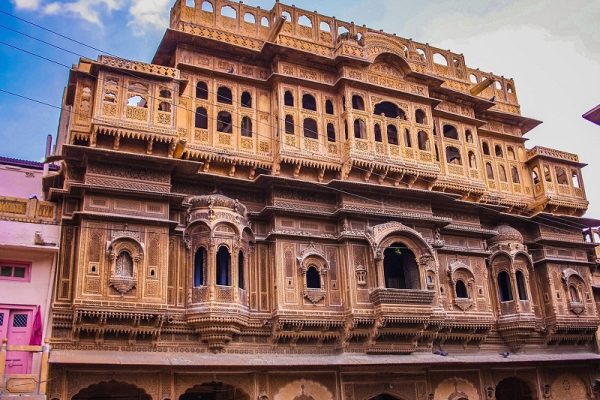
Nathmalji ki Haveli was constructed by Maharawal Berisal in 1885 CE, to serve as the residence of Diwan Mohata Nathmal, the then Prime Minister of Jaisalmer. The chief architects of this haveli were two brothers, named Hathi and Lulu. There is a very interesting story regarding its construction. It is believed that both the brothers started building the facets of the haveli simultaneously. The two sides are similar, but not identical.
This haveli is famous for its architecture that reflects the fusion of both Rajput and Islamic styles. The building is planned around two courtyards; the one in the front is much smaller than the rear one. The front part of the building is three storeys high and has the main living quarters. The rear portion is two storeys high and contains the ancillary accommodation.
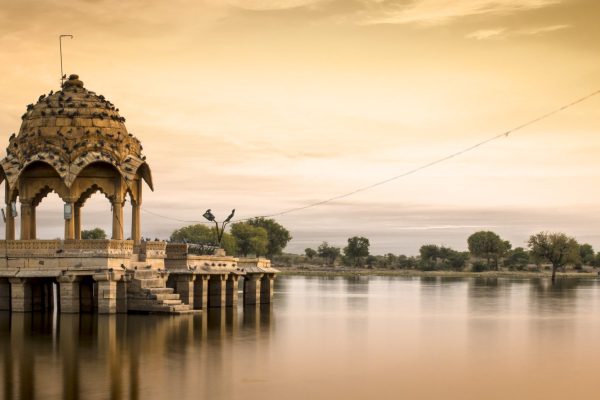
The Gadsisar Lake is one of the most famous tourist places in Jaisalmer which was built by Raja Rawal Jaisal, the first ruler of Jaisalmer. In the later years, Maharaja Garisisar Singh rebuilt and revamped the lake. This historic lake is located towards the south of Jaisalmer city and the entrance to the lake is through Tilon-Ki-Pol, a magnificent and artistically carved yellow sandstone archway. The Tilon Ki Pol is adorned with an idol of the Hindu deity Vishnu, installed in the year 1908.
The bank of the Gadsisar lake is surrounded by artistically carved Chattris, Temples, Shrines, and Ghats. Its charm lies in the fact that it was the only source of water for the Jaisalmer city in the olden days. Due to its proximity to Bharatpur, different migratory birds can also be seen on the bank of the lake, adding to its beauty.
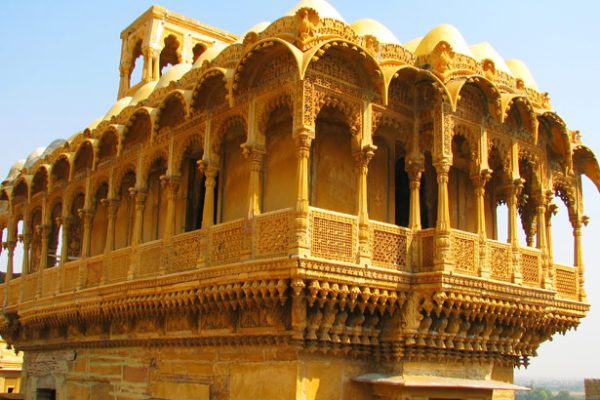
Salim Ji ki Haveli is located at the heart of the Jaisalmer city, near the Jaisalmer railway station. This 300 years old Haveli is named after its owner Salim Singh Mahto and was built on the remains of an older haveli, built in the late 17th century. Salim Singh Mahto was the then prime minister of the princely state with Jaisalmer as its capital. Presently a part of the Haveli is still occupied by the descendent of Salim Singh Mahto. The haveli is situated beside the hills near the Jaisalmer Fort and has a distinct architecture.
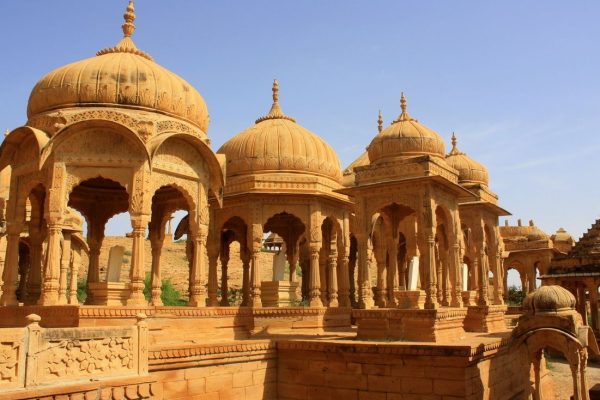
Bada Bagh might surprise you with its greenery in the arid desert landscape of Jaisalmer. This was in fact the very idea when it was built back in the 16th century – to build a beautiful green oasis in the desert region.
Originally, there were only a dam and a water reservoir, but successive rulers started to build memorials and chhatris in the memory of erstwhile rulers of this region. Today, this garden complex, just 5 km from Jaisalmer is a prominent tourist attraction of Jaisalmer.
The cenotaphs have beautifully carved chhatris, with exquisite chiseled pillars and inscriptions made on yellow sandstone. The landscape garden besides Bada Bagh is soothing to the eyes, and provides a green touch to the entire region. There are many mango trees around too.
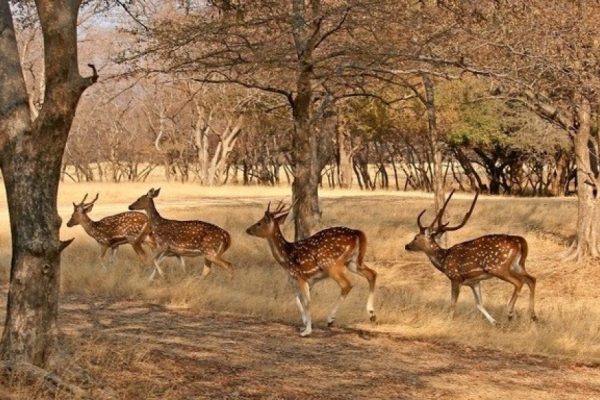
One of the best spots to explore the Thar desert ecosystem and wildlife, the Desert National Park is an amalgamation of rolling sand dunes, jagged rocks and dense salt lakes. Situated between the districts of Jaisalmer and Barmer, the protected area is amongst the largest in the country with a total area close to about 3,162 sq km. Lying in the midst of the remote Thar desert, Desert National Park provides a haven to thriving populations of black bucks, chinkaras and desert foxes that can be seen here. The endangered great Indian bustard can also been seen here. During winter, migratory raptors such as Himalayan and Eurasian Griffon vultures, eastern imperial eagle and the saker falcon fly here to spend the season in warmer environs. The Desert National Park is a bird watchers paradise where you can explore the bounties of nature. In the event that you truly need to investigate the wonderful natural life at the Desert National Park in Jaisalmer then an ideal path is by setting out on a thrilling jeep safari. Camping with bonfires is another exciting activity that attracts people to the park.
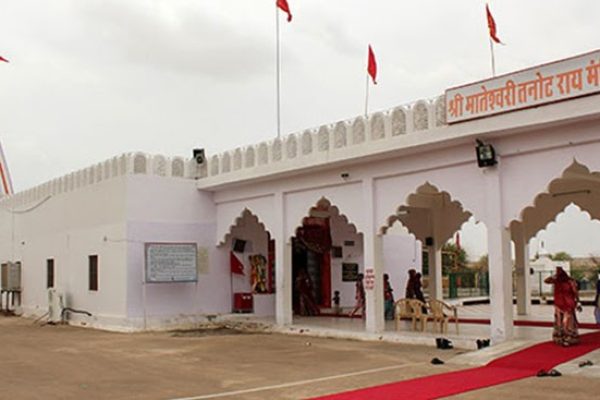
The Tanot Mata Temple situated in the Tanot village of district Jaisalmer, is a major attraction for those visiting the Thar Desert in Rajasthan. It is enveloped within numerous legends that are sure to instil awe and curiosity towards its sacred power and purity. The heritage site is preserved and maintained by the Border Security Force (BSF) of India since the Indo-Pakistan war in 1971.
Localities have immense faith on the temple’s austerity and pay regular visit to the Tanot Mata. She is believed to be an apparition of the Hinglaj Mata Goddess. Tanot is in close proximity with Longewala, a critical India-Pakistan border that forbids access to any individual without permission of Indian Government authorities. Due to its topography, it can harness large quantities of wind energy, thus visitors can see the rows of windmill energy power plants established here. There is a museum built adjacent to the temple that displays certain historic artefacts collected from the war period. This is a must visit place for those who wish to pay their homage to the Indian Army and the temple that is considered holy by the Indian heroes of defence and harmony.
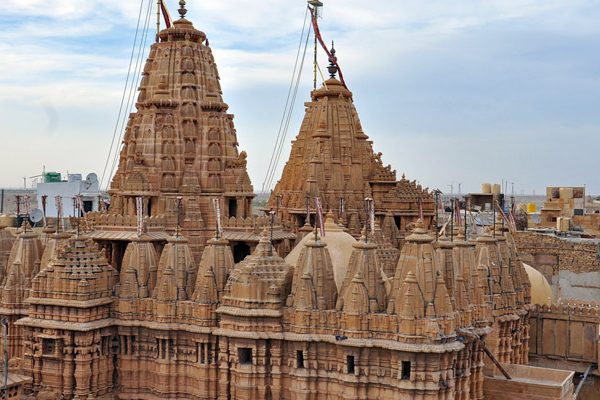
The Jain Temples located inside the Jaisalmer Fort date back to the 12th and 15th centuries. The temples are dedicated to Rikhabdevji and Shambhavdevji, famous Jain hermits known as ‘Tirthankars’ (wise teachers who taught people how to attain nirvana). Like all other structures in Jaisalmer, the temples are carved out of yellow sandstone. They have been built in the famed Dilwara style which is known for its beautiful architecture.
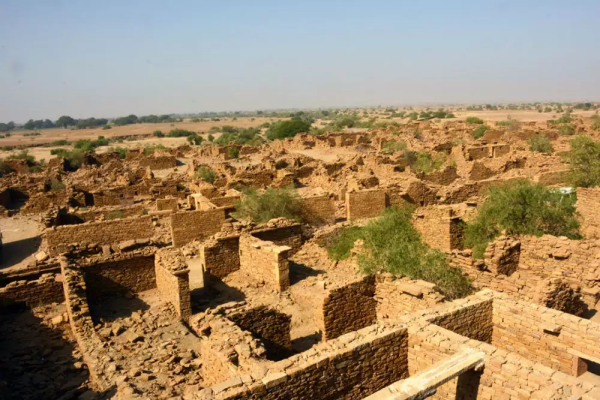
The underlying history of Kuldhara has piqued the curiosity of one visitor too many, and makes it one of the most enigmatic destinations to visit in Jaisalmer, Rajasthan. The story has a beautiful daughter, an unscrupulous minister, scared villagers, an exodus in the middle of the night, and no idea where the villagers vanished. This is not the story of a movie, but the unfathomable legend that lies behind the abandoned village of Kuldhara. Located about 18 km from the city of Jaisalmer is this old town that was abandoned by its villagers in the 1800s. It was like the entire town vanished in the course of a single night. With about 85 villages full of people, it remains a mystery as to how no one saw them leave; in fact, even to this date, no one knows where all of them went either. The village remains uninhabited to the day, in the same state that the villagers had left it, hundreds of years ago. The location has become a major tourist destination as people from all over the world travel here to revel in the mysteries of the past. The desolate outline of Kuldhara etches a story in front of your eyes, if you are keen enough to read it!

This exhibit is primarily to pay respect to all the soldiers who took part and lost their lives in the 1965 India-Pakistan war and the 1971 Longewala battle. A visit to this museum lets you see a number of captured tanks and other memorabilia from the battle, instilling a sense of immense pride in your country and its soldiers. The museum also features an audio-visual room where they screen movies about the battle. You can also see an interview with Major Kuldip Singh Chandpuri who was a crucial part of the Longewala battle. In the video, he gives a detailed description of how the soldiers fought the Longewala battle. The museum also has a war memorial replete with many war trophies and vintage equipment, along with tanks, guns, and military vehicles, murals of soldiers who lost their lives in the war, and weapons which were used during the same. Even the Air Force has given a Hunter aircraft, which was used during the Battle of Longewala in the 1971 Indo-Pak War, as a present to the museum. Located on the Jaisalmer-Jodhpur Highway, the museum has free entry, and holds a very important part of our country’s history. It is truly one of the places that you cannot afford to miss.
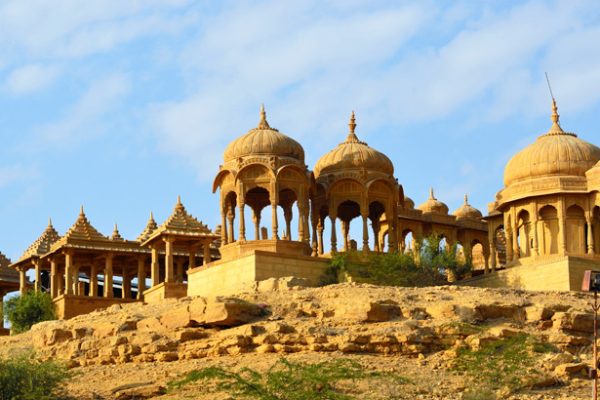
Vyas Chhatri is an assemblage of golden sandstones, which stands as an edifice of Rajasthani architecture. It was built in order to honour Sage Vyasa, who compiled the 300,000 verses of the epic Mahabharata. His cenotaph is situated on the north of the structure. It is popularly known as the city’s sunset point as it gives a birds-eye view of Jaisalmer. Located inside a structure called Bada Bagh in Jaisalmer, it is one of the most identifiable landmarks of the desert city.
It is situated on the northwestern edge of the town within a Brahmin Cemetery; the burial grounds of kings managed by the Royal family of Jaisalmer. The carvings and the elevated dome-shaped pavilions are a sight to behold. This elegant architecture of golden-hued sandstone over which the meticulously done intricate carvings is an awe-inspiring vision. Vyas Chhatri is a scenic spot for visitors who’d love to catch a sunset in a desert among the golden sandstone structures.
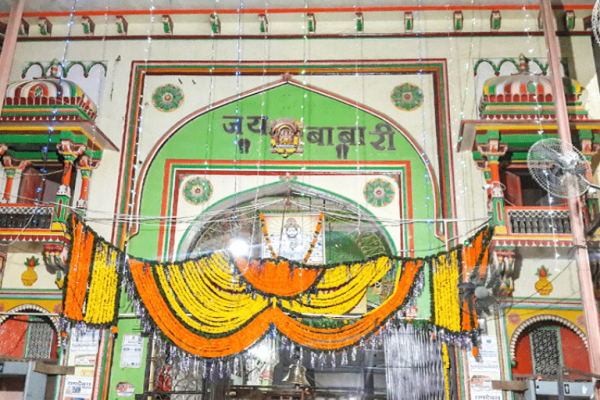
Ramdevra is a Village located about 12 km to the north of Pokhran in Jaisalmer district of Rajasthan in India. Ramdev Pir or Baba Ramdev is a Hindu Deity of Rajasthan, India.
He was ruling during the 14th century and said to have miraculous Power, who devoted his life to the betterment of the poor people. Lord Ramdev Pir was the son of the king Ajmal.
First, the King was not having any child. So the King Ajmal went to Lord Krishna at Dwarka, where he pleased for the son like him. So the king was blessed with the two Sons one Viramdev and younger Ramdev.
Toy Horse made up of the Clothes is said to be the main Offering at the temple of Ramdev Pir, Because during the childhood the lord uses to play with Toy Horse made up of Coth.